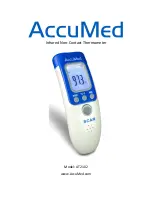
2800 Laura Ln, Middleton WI 53562 | 800.288.9383 Fax: 608.836.9044 | www.tcsbasys.com
25
USER
INTERFACE
Figure 13
System Test screen details vary pending on model specific features.
Relay Outputs
: The square toggle buttons at the top of the screen allow direct manipulation of the relays. When the button
is highlighted, the relay is active, and the connected equipment should turn on. After a relay button is touched, there is a 3
second delay before the changes apply. Turning on a heating or cooling relay also turns on the fan relay [G] as equipment
safety precaution. The fan relay can be turned off subsequently. If toggled off within the three second delay the fan will
not turn on.
Analog Outputs: The configuration of each analog output is identified on the screen. Each analog output can be adjusted
up or down in 10% increments. The percentage output corresponds to the amount of heating or cooling desired. The mA
output shows the actual signal being sent, taking into account reverse/direct action and 0/4-20mA range.
Control Testing
: The Control Testing buttons simulate a large need for heating or cooling, and allows the controller to
manipulate the respective outputs. During this process, all programed sequencing and delays are in effect. The heat/cool
lockout logic is disabled during this testing in order to allow the heating and cooling to be tested in any season, however,
the discharge air limits are allowed to operate as this is part of the testing. A heating or cooling test runs for ten minutes
(unless canceled), with a countdown timer shown. Also, the affected analog outputs are driven immediately to the appro
-
priate Max/Min levels. When a test is active the manual control of relays and analog outputs is disabled. However, the
state of each relay is still reflected by its button’s toggle (highlighted) state.
While control testing is in progress, the inputs can be monitored to verify correct equipment operation.
Controller Inputs
: Located on the bottom half of the screen, the inputs are updated once a second. They are useful for
monitoring the test in progress, and are broken into three groups:
• Temperature Sensors: Temperature readings as well as Ohms for T1, T2, T3, and the internal sensor are shown. For
troubleshooting purposes the RTD inputs report both open circuit and shorted circuit conditions. An open circuit means
there is likely either no sensor connected, a broken wire, or the sensor is reporting a value above the range of the input. A
short circuit means wires are shorted together, or the sensor is reporting a value below the input range.
•
Digital Inputs (DI): Shown is whether the DI is sensing open or closed contacts as well as how the state is interpreted
internally (active or inactive). Typically, active refers to a closed contact and inactive refer to open contact (when polarity
is normal).
•
Analog Inputs (AI): The value is shown as being scaled to engineering units as well as the raw milliamperage.
4.5.2.11 Access Code
This access code, if enabled, prevents unauthorized access to all setting screens. By default, the access code is disabled.
The access code consists of four digits; the access code “0000” disables the access code feature. If you have lost or
forgotten your code, call TCS Technical Support.








































